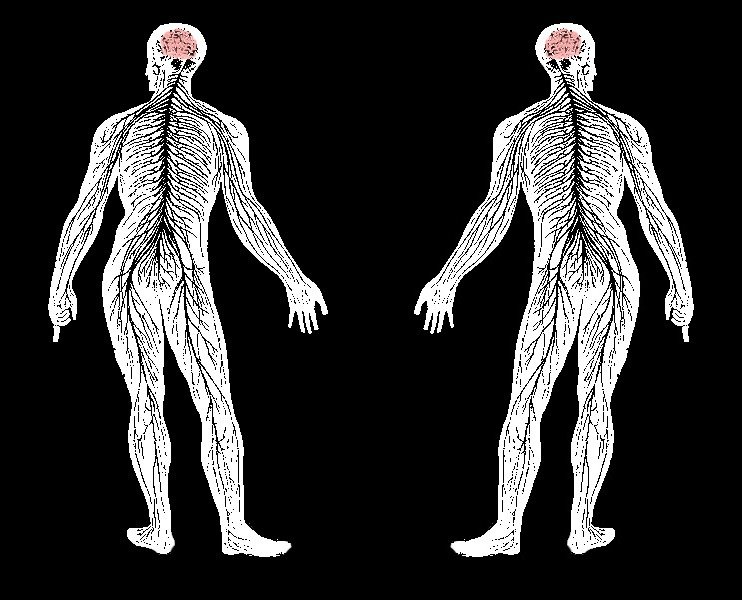This ignited interests of various neuroscientists, including psychiatrists, about the GI nervous system (1) The enteric nervous system is composed of neuronal plexuses like the Meissners and Auerbach's plexus, surrounded by a pool of more than 30 neurotransmitters like serotonin, dopamine, glutamate, norephinephrine and nitric oxide, and other chemical mediators like neuropeptides and enkephalins.
It also contains glia-like supportive cells, and together contains nearly 100 million neurons as that in the spinal cord (2,3) The Gut-Brain Axis describes the bi‐directional neural pathways linking cognitive and emotional centers in the brain to the neuroendocrine centers, the enteric nervous system, and the immune system of the body (4).
Emotional states such as depression and behavioral dispositions, ranging from hostility to psychosocial stress, can directly influence both physiologic function and health outcomes in different ways (5). One such example is the Gut Brain Connection. The gut brain connection is intimately involved in explaining how the psychosocial stress - induced inflammatory response in the gut - is modulated by the bidirectional communication between the neuroendocrine and immune system of the gut with brain. Many lines of research have established multiple pathways by which the immune system and the enteric nervous system communicate bidirectionally with the brain (6).
There are two types of gut flora
The normal gut flora is essential to maintain the Gut brain axis, thereby maintaining a good mood. The composition of normal gut flora varies from person to person. In addition, there are also variations based on the location of the gut microbes in the gut of different individuals. These variations create diversified patterns of enteric nervous system in each individual as these microbes are essential for the production of serotonin is vital for the development and maturation of enteric nervous system in order to maintain a homeostatic gut brain axis.
Any disruption in the growth of normal microbes impairs cognitive and emotional balance (7) whenever the gut is exposed to pathogenic microbes; Secretory IgA is constantly produced (60 mg/kg) at the gastrointestinal interface by plasma cells to prevent adhesion of these pathogens, thus maintains a homeostatic gut brain axis (8,9) When at stress, the IgA production is decreased, leading to activation of pro-inflammatory cytokines like Tumor Necrosis Factor Alpha and Interleukins‐1,6,8 which spontaneously stimulates the hypothalamus to produce Corticotrophin releasing hormones (CRH) via two routes : (a) crossing blood brain barrier via blood stream and (b) Vagus nerve which carries 90% of information of immune status from periphery to CNS. Thus the CRH in turn stimulates ACTH from anterior pituitary to produce cortisols from the Adrenal cortex.(10,11,12) When at stress, TNF Alpha up regulates Indoleamine 2,3‐dioxygenase (IDO), a catabolic enzyme which degrades tryptophan in order to prevent bioavailability of tryptophan for microbes, serotonin formed from tryptophan is vital for elevation of mood. Its deficiency leads to depression. Furthermore, the released cortisols, stimulate tryptophan-2,3-dioxygenase (TDO) to produce kyurenine which further forms neurotoxic quinolonic acid which is a NMDA agonist thereby impairing cognition (13,7) Concluding, the enteric nervous system communicate with CNS through neural, immune and endocrine pathways which may help in understanding the mind body connection.
References
- Gershon M. The second brain: a groundbreaking new understanding of nervous disorders of the stomach and intestine. New York, NY: HarperCollins Publishers; (1998).
- McMillin DL, Richards DG, Mein EA, Nelson CD. The abdominal brain and enteric nervous system. J Altern Complement Med. (1999); 5(6):575-86.
- Wood JD, Alpers DH, Andrews PLR. Fundamentals of neurogastroenterology. Gut (1999); 45(Suppl II):II6 - II16.
- Shanahan F. Brain-gut axis and mucosal immunity: a perspective on mucosal psychoneuroimmunology. Semin Gastrointest Dis. (1999) Jan;10(1):8-13.
- Anton V L, Cortizo B : Mind-Body Medicine: Stress and Its Impact on Overall Health and Longevity. Ann. N.Y. Acad. Sci.1057: 492 - 505 (2005). doi:10.1196/annals.1322.038
- De Kloet ER, Oitzl MS, Schobitz B. Cytokines and the brain corticosteroid receptor balance: relevance to pathophysiology of neuroendocrine-immune communication. Psychoneuroendocrinology. (1994);19(2):121-34.
- Serotonin, tryptophan metabolism and the brain-gut-microbiome axis: S.M. O'Mahony, G. Clarke, Y.E. Borre, T.G. Dinan, J.F. Cryan: Behavioural Brain Research. Elsevier 277 (2015) 32 - 48
- Cunningham-Rundles C. Physiology of IgA and IgA deficiency. J Clin Immunol.(2001); 21 :303 - 309
- Bosch JA et al, Depressive symptoms predict mucosal wound healing. Psychosom Med. (2007) Sep-Oct;69(7):597-605. Epub (2007) Aug 31.
- Watkins L R, Maier S F. Implications of immune-to-brain communication for sickness and pain PNAS 96: 7710-7713.(1999)
- Turnbull AV, Rivier C Regulation of the HPA axis by cytokines. Brain Behav Immun, Dec (1995); 9(4): 253-75.
- Sternberg, E M. Neural-immune Interactions in Health and Disease J. Clin. Invest. (1997) 100: 2641-2647
- Kiank C, Zeden J-P, Drude S, Domanska G, Otten W, et al. (2010)Psychological Stress induced IDO1- Dependent Tryptophan Catabolism: Implications oon immunesuppression in Mice and Humans. PLos ONE 5(7): e11825. Doi: 10.1371/journal.pone.0011825




Comment: Read more about the gut brain connection